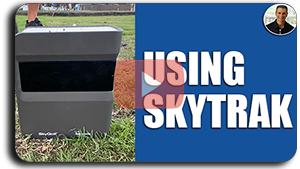Now that the weather is getting colder and it’s getting darker earlier, you have the opportunity to improve your golf game at home with very little equipment.
We have the advantage of the Net Return golf net and the Skytrak launch monitor. We know that most people do not and we want to help you improve your slice at home with just a golf club and a little bit of space.
In our golf studio, we are able to work with our students during inclement weather. For some people, it makes sense to deck out their space with all the gadgets but for some people, this may not be an option.
If you are struggling with a slice, your club face is probably open relative to your swing path. Most of the time this means that the club face is open and the path is moving to the left. The first thing we want to do is make sure we have a good grip. A strong grip means that the V between my thumb and forefinger on my top hand points toward my back shoulder. For someone who has had a chronically weak grip, this may be something that you have to work on for awhile to get comfortable. Once you have committed to that strong top hand, we can move onto the next thing. If the grip is strong and you’re still struggling with a slice, we may want to start looking at the next thing which would be swing path.
We need to keep our hands in front of our chest for as long as possible. Visualize yourself holding a 50 pound sandbag. We are going to need to rotate our torso in order to get that bag to swing. We want to mimic that same body movement when we hold our club, keeping our hands and arms fairly inactive. At home, you can also use a soccer ball or basketball to try to keep your hands in front of your chest during the swing. Once you put the club in your hands, try to keep the club parallel to the ground when it’s parallel to the target.
It’s helpful to have something to swing into but if you can get started off correctly, working on those things at home, when you get to the range, you will be able to use what you’ve been working on at home. In our next instructional blog, we are going to talk about how to start your downswing inside while you practice to have a better chance to swing the club in-to-out and hit the ball straighter. Click the picture below to watch the video.
To watch our instructional video




